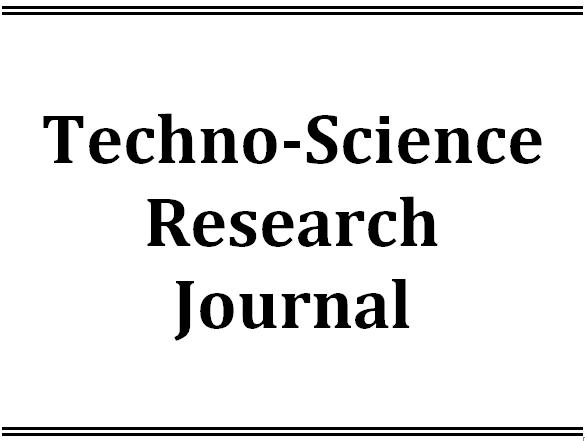Latest Issue
Empowering Education with Online Khmer Handwritten Text Recognition for Teaching and Learning Assistance
Published: August 30,2025Undergraduate Student Dropout Prediction with Class Balancing Techniques
Published: August 30,2025Status of Seawater Quality at Koh Rong Island, Sihanoukville, Cambodia
Published: August 30,2025Low-Complexity Detection of Primary Synchronization Signal for 5G New Radio Terrestrial Cellular System
Published: August 30,2025Word Spotting on Khmer Printed Documents
Published: August 30,2025Tuning Hyperparameters Learning Rate and Gamma in Gym Environment Inverted Pendulum
Published: August 30,2025Examining Passenger Loyalty in Phnom Penh Public Bus System: A Structural Equation Modelling Approach
Published: August 30,2025Prediction on Load model for future load profile of Electric Vehicle charging demand in Phnom Penh
Published: August 30,2025Economic Study on Integrating PV-DG with Grid-Tie: Case Study in Cambodia
Published: August 30,2025Prototyping of IoT Smart Controller: Case Study for The Gravity Irrigation System
-
1. ITC
Academic Editor:
Received: January 22,2024 / Revised: / Accepted: January 22,2024 / Available online: June 01,2020
The robot localization is a crucial task that needs to be solved as a part of the navigation problem for an autonomous robot. In order to estimate the location of a robot in the environment, various sensors are used to extract meaningful information from measurements to acquire knowledge about the robot’s environment and motion. Due to the fact that the sensor uncertainty is random, it is impossible to find an accurate pose for the robot by only one senso,r and the accuracy of any sensor is generally related to its price. Sensor fusion technique is a well•known approach to give the best estimate robot location and how certain it is by combining data from two or more inexpensive sensors. In this paper, the estimation of the robot’s new pose given the previous pose and error-accumulated odometry is proposed based on the fusion of data from wheel encoders and the Inertial Measurement Unit (IMU) for a differential drive mobile robot. The robot has a very simple driving mechanism that is quite often used in practice, especially for service mobile robots. The required mathematical models of the robot and indoor localization system are derived. The mathematical tool for sensor fusion is the Kalman filter which provides the optimal estimate of the system state, and robot configuration, assuming that the noise from each sensor is zero•mean and Gaussian. The robot was driven in two different cases; circular trajectory and square trajectory to evaluate the performance and consistency of the robot localization. The experimental result shows the effectiveness of the proposed work for the robot’s pose estimation.

